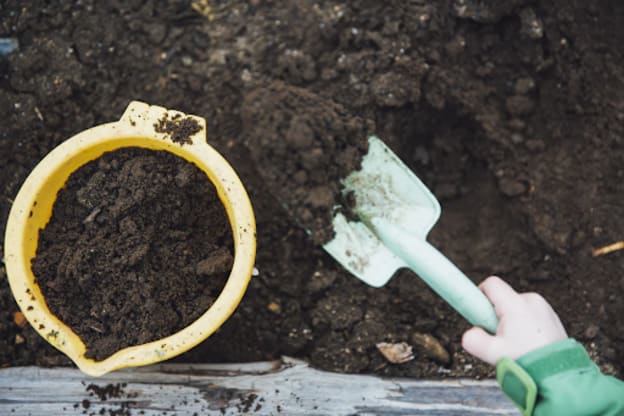Written by Guest Blogger: Karlyn McKelli
Hero image (Royalty-free)
Want to reduce the amount of waste you send to the landfill each week? Reuse your kitchen scraps through composting. This at-home project is self-guided and fully customizable to fit spaces big and small.
Composting turns your leftover waste into a healthy soil feeder for your yard or potted plants. Nearly 25% of solid waste found in U.S. households comes from the kitchen. Stop greenhouse gases in their tracks by putting organic matter back into the earth.
Keep reading to learn more about how to compost and what materials you should (and shouldn’t) add to your pile!
Materials to compost
While turning leftover kitchen scraps into compost is a great way to recycle, not every material is good for your bin or pile; in fact, some materials can generate a rotten egg smell, delay decomposition, and even poison your pile and lawn.
Here’s a list of organic materials you can add to your pile, and items you should skip. This printable sign also tells you what you can and can’t compost. Hang this in your kitchen so you never compost the wrong item!
Browns:
Brown ingredients add carbon to your compost pile, which is an essential ingredient in the composting process. Of all the ingredients you add to your compost, you should have the most browns. In fact, there should be three parts brown to every green part. Your brown layers will always be thicker.
Brown compost materials that are great for your compost:
-
Dead leaves
-
Egg shells
-
Shredded newspaper
-
Branches and twigs
Greens:
While browns are more abundant in your compost, greens are also important as they add nitrogen to your compost! These ingredients are also more likely to be found in your kitchen.
Green compost materials that are great for your compost:
-
Loose tea and tea bags
-
Fruits
-
Veggies
-
Old flowers
-
Coffee grounds and filters
Materials to avoid
You don’t want to add harmful materials that could delay composition or make your soil feeder poisonous.
Avoid these materials when composting:
-
Diseased plants and weeds
-
Meat and dairy
-
Cooking oils
-
Citrus fruit peels
-
Coal or charcoal ash
How to set up an outdoor compost pile
Since Americans are spending more time at home these days it’s the perfect time to set up a compost pile in your backyard or community garden. Finding the right space for your waste is an important step in your composting process.
Here are some basics for setting up an outdoor composting pile.
-
Decide where to put your pile: You’ll want to set up your compost pile in a place that gets natural shade. If possible, it’s also a good idea to select an area close to a water source such as a hose so you can easily add moisture to your compost.
-
Gather your materials: Start collecting materials to add to your compost pile. We recommend setting up a separate bin in your kitchen for scrap collection.
-
Add your layers: Your compost pile should be three parts brown material and one part green. Start adding layers to your compost by adding the brown layer first and then green. Remember that there should be more brown materials than green so your compost gets the correct amount of carbon to nitrogen ratio.
-
Moisturize your compost: Adding water helps keep your pile moist, so use a nearby water source for this step but make sure your compost doesn’t get soggy. If you add too much water you may notice a rotten smell and decomposition may be delayed.
-
Aerate your compost: Turn your compost pileevery three to seven days to help speed up decomposition. After you’ve turned it a few times you should notice your compost beginning to feel warm and steamy (that means it’s working!)
-
Use your compost as soil feeder: After two to four months your compost should be ready to be reused as nutrient rich soil. The compost should look like crumbly topsoil and have a pleasant, earthy smell.
Interested in learning more about compost? Check out more tips on what to do with your compost and how to compost indoors with this visual from The Zebra.



